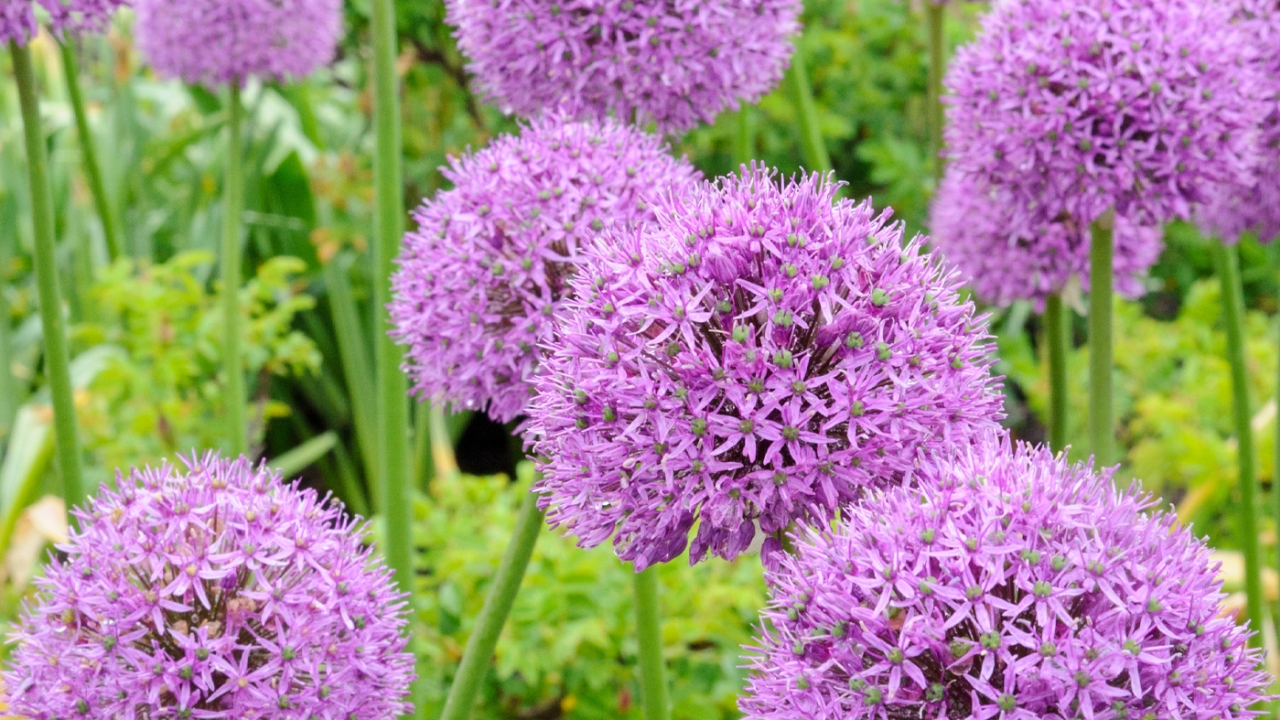

Waterlilies
Nymphaea
Waterlily is very fond of floating in a sunny pond. Tantalizing little creature, likes to grow where one can't reach her. – Elizabeth Gordon
Nymphaea is the beautifully named genus for about half of all waterlily species. (The Nymphaeaceae family totals eight genera and about 70 species.) Waterlilies are aquatic floating-leaved plants, rather than submersed plants; the latter live fully underwater, while waterlilies are rooted in underwater rhizomes that send long, flexible stems (called petioles) up toward the light. They require full sun and relatively calm water so that their floating leaves can unfurl without ripping.
There are three key characteristics to consider if you choose to grow waterlilies as garden writer Karen Zaworski noted more thoroughly in our Smart Gardener article, Picture-Perfect Waterlilies. The climate preference, plant size, and bloom time vary in different waterlily species. Tropical or hardy, small or large, and night blooming or day blooming are significant inquiries.
Below are some examples of different species types that choose different answers to those questions.
Waterlilies at the Garden
Aquatic Garden
Heritage Garden
Water Gardens
A Summer Perimeter Walk
A Walk along the Water's Edge
Complete List of Waterlily Species
Information From the Experts
Fish for Backyard Pond
Keeping Ponds from Freezing
Overwintering Water Lilies
Picture-Perfect Waterlilies
Stories Featuring Waterlilies
Glorious Mysteries in the World of Plants
Victoria Waterlily Turns from Female to Male
Tropical or Hardy
Tropical waterlilies are often unique and colorful, but are too tender for our Zone 5 winters, while "hardy" refers to waterlilies that can survive our winters.
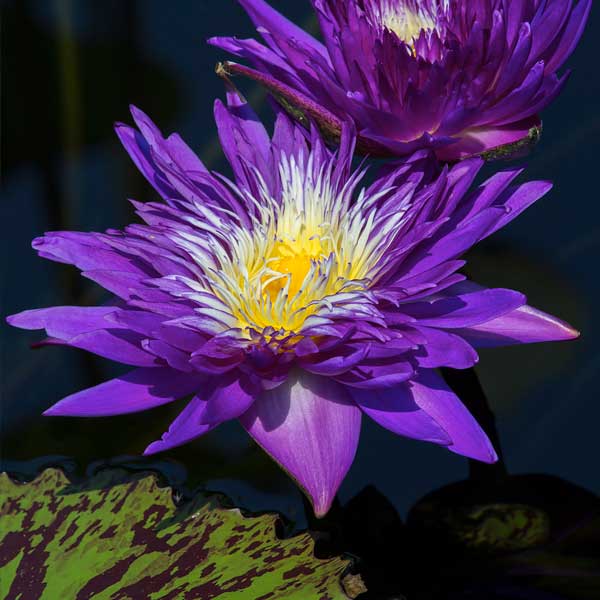
Tropical: Nymphaea 'Plum Crazy'
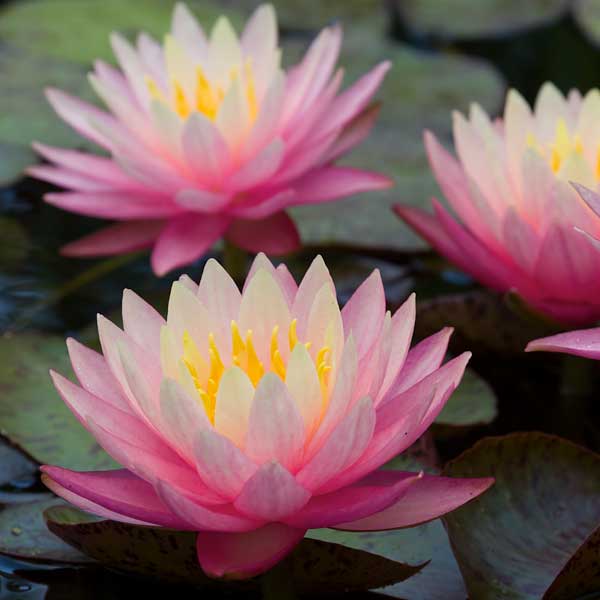
Hardy: Nymphaea 'Sunfire'
Small or Large
The most important size to consider is the spread—these long-armed plants can reach out many feet in all directions.
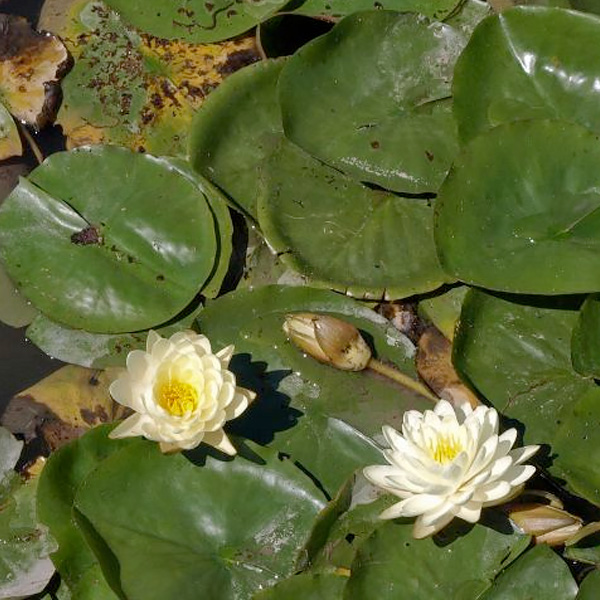
Small: Nymphaea 'Denver'
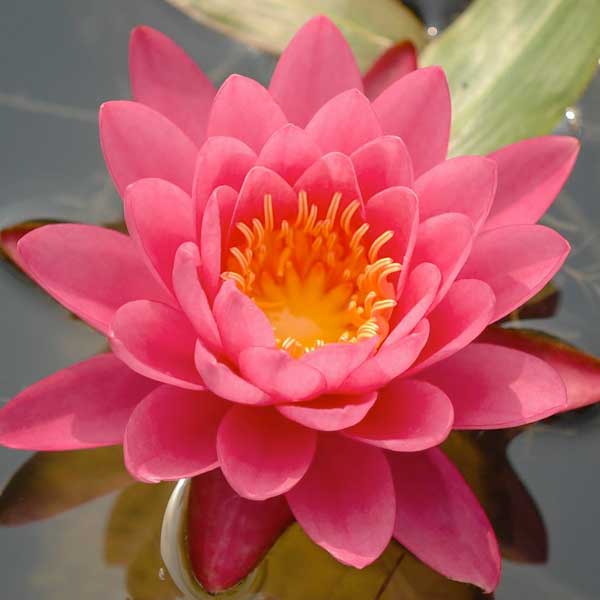
Large: Nymphaea 'Mayla'
Night Blooming or Day Blooming
Depending on the pollinator (mainly beetles), waterlilies bloom either by day or by night.
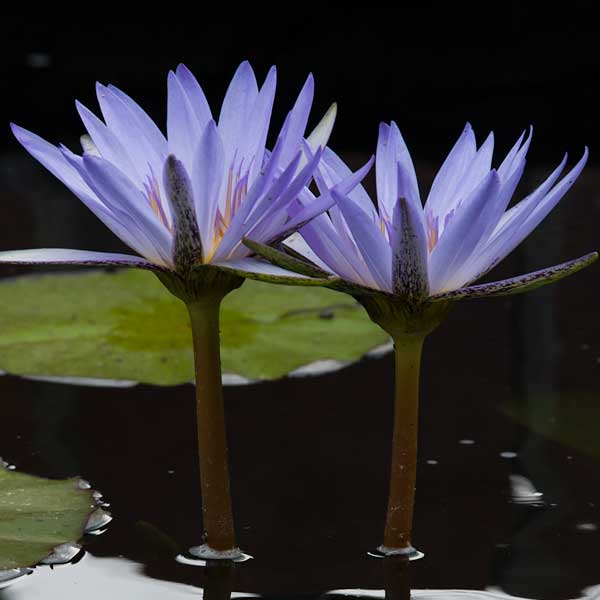
Day Blooming: Nymphaea 'Blue Beauty'
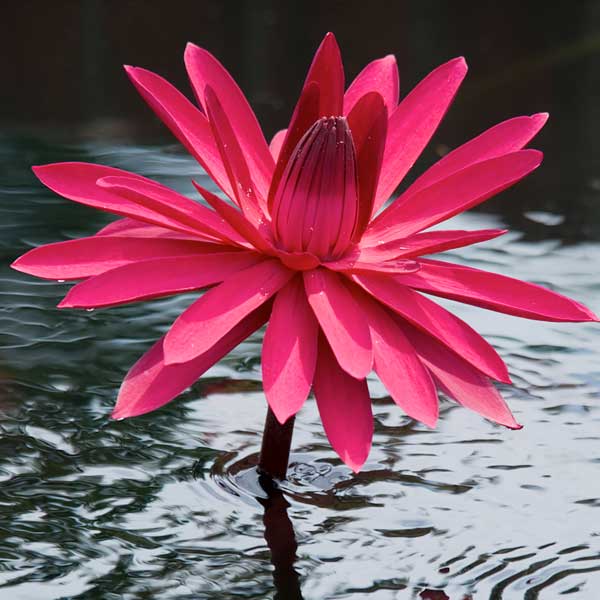
Night Blooming: Nymphaea 'Red Flare'

